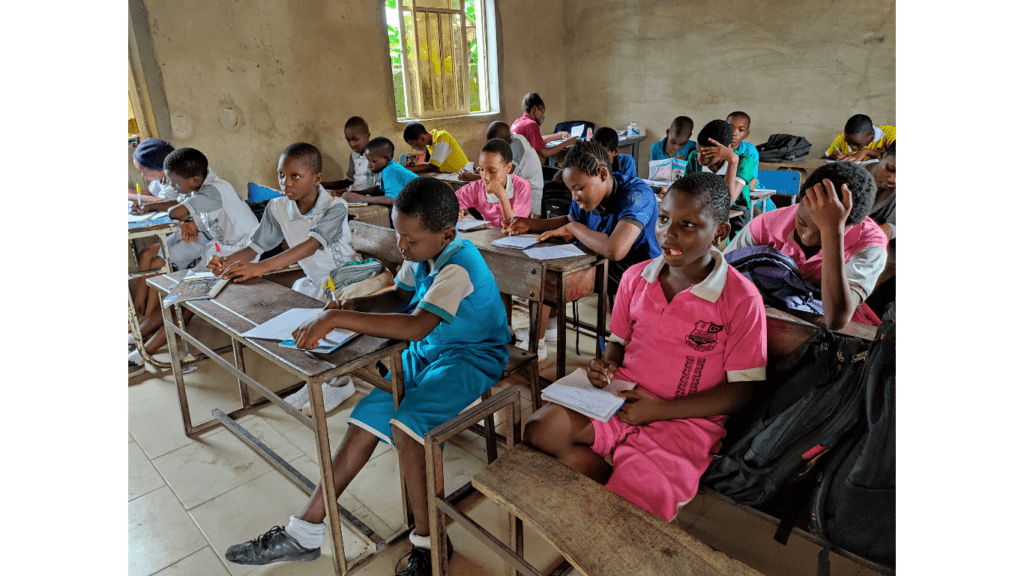The Rise of Remote Learning
Historical Perspective and Recent Catalysts
- In exploring the rise of remote learning, it’s essential to consider its historical roots and the recent events that have accelerated its adoption. Distance education has a long history, with early correspondence courses dating back to the 19th century. However, the proliferation of digital technology in the 21st century has been a significant catalyst for the expansion of remote learning opportunities.
- The landscape of education shifted dramatically in recent times, with the COVID-19 pandemic serving as a powerful accelerator for remote learning. School closures and social distancing measures forced educational institutions worldwide to pivot quickly to online learning modalities. This rapid transition underscored the importance of flexible and accessible educational solutions, highlighting the need for remote learning options to ensure continuity in the face of disruptions.
Impacts on Traditional Educational Models
- The advent of remote learning has brought about profound impacts on traditional educational models. The traditional classroom setup, characterized by face-to-face interactions, has been reimagined through virtual platforms and online resources. This shift has not only revolutionized the way students learn but has also transformed the role of educators in facilitating online instruction.
- One significant impact of remote learning on traditional educational models is the increased emphasis on digital literacy and technological skills. Students are now required to navigate online learning environments, collaborate virtually, and leverage digital tools to access educational content. This shift towards digital competency has reshaped the fundamental skills needed for success in the modern workforce.
- Moreover, remote learning has paved the way for personalized and self-paced learning experiences. With the flexibility of online education, learners can access resources at their convenience, allowing for individualized learning paths tailored to their unique needs and preferences. This personalized approach has the potential to enhance student engagement and improve learning outcomes by catering to diverse learning styles and pace.
Analyzing Equity in Education
- Continuing from the discussion on the transformation of education through remote learning, it’s crucial to analyze the aspect of equity in education in the context of this revolution. Addressing equity ensures that all students have fair and adequate opportunities to learn and succeed, regardless of their backgrounds or circumstances. Let’s dive deeper into examining equity in education within the realm of remote learning:
Bridging the Digital Divide
- In the landscape of remote learning, bridging the digital divide is paramount for ensuring equitable access to education. The digital divide refers to the gap between individuals who have access to technology and the internet and those who do not. This gap can significantly impact students’ ability to engage in online learning effectively. To bridge this gap, initiatives such as providing devices and internet connectivity to underserved communities are essential in ensuring all students have equal opportunities to participate in remote learning.
Inclusivity for Varied Learning Needs
- Another critical aspect of equity in education is inclusivity for varied learning needs. Every student has unique learning requirements, and it’s essential to cater to diverse needs to ensure an inclusive learning environment. In the realm of remote learning, providing options for different learning styles, accessibility features for students with disabilities, and accommodations for English language learners are crucial for promoting equity. By embracing inclusivity and accommodating varied learning needs, educational institutions can create a more equitable and supportive learning environment for all students.
Accessibility in the Remote Learning Environment

1. Technology as an Enabler
In the realm of remote learning, technology serves as a vital enabler, facilitating access to education beyond physical boundaries. It allows students to engage in virtual classrooms, access educational resources online, and collaborate with peers and educators seamlessly. The integration of interactive tools, multimedia content, and communication platforms enhances the learning experience, making education more engaging and interactive for students. Embracing technology in education broadens access to diverse learning opportunities, enabling students to learn at their own pace and style while fostering a deeper understanding of the subject matter.
2. Addressing Accessibility Challenges
When discussing accessibility in the remote learning environment, it is crucial to address the challenges faced by students with varying needs. Ensuring inclusivity and equal access to educational content is paramount in creating a supportive learning environment for all. Key considerations include providing captioning and transcripts for audiovisual materials for students with hearing impairments, offering screen reader compatibility for visually impaired students, and designing courses with navigable structures for learners with cognitive disabilities. By implementing universal design principles and accessibility features in online learning platforms, educational institutions can cater to the diverse needs of students and enhance the overall learning experience for everyone.
The Benefits of Remote Learning
- Starting with the benefits of remote learning, this section highlights how this educational approach brings advantages such as flexibility, personalization, and expanded horizons to the forefront of modern education.
Flexibility and Personalization
Exploring the benefits of remote learning, I find its flexibility to be a key advantage. Remote learning allows learners to access educational content at their convenience, enabling a personalized pace of learning. For example, students can review lectures multiple times to grasp challenging concepts, adapting the learning process to their individual needs. This flexibility offers a tailored educational experience that caters to diverse learning styles and preferences.
Expanding Educational Horizons
In considering the benefits of remote learning, I also recognize its role in expanding educational horizons. Remote learning transcends geographical barriers, providing access to a wide range of courses and resources from around the globe. By leveraging online platforms, students can engage with diverse perspectives, cultures, and educational resources that might not be readily available in traditional classroom settings. This exposure broadens students’ knowledge and fosters a global mindset, preparing them for success in an interconnected world.
Pitfalls and Considerations
The Question of Quality
When it comes to remote learning, ensuring the quality of education is paramount. The challenge lies in maintaining the same level of educational excellence and student engagement as traditional in-person learning environments. One key consideration is the effectiveness of online teaching methods in delivering educational content and fostering student understanding. As an educator, I focus on implementing interactive and engaging online activities to sustain academic rigor and promote active learning in a virtual setting. The quality of assessments and feedback mechanisms also plays a crucial role in gauging student progress and offering meaningful insights for improvement.
Social Implications for Students and Faculty
Remote learning poses social implications for both students and faculty members. As an educator navigating this digital landscape, I recognize the importance of fostering a sense of community and connection among students in virtual classrooms. Encouraging peer interaction, group discussions, and collaborative projects helps in combating feelings of isolation and enhancing the overall learning experience. Moreover, faculty members must adapt their teaching approaches to accommodate diverse learning needs and provide adequate support to students facing challenges in the online learning environment. By promoting inclusivity and employing innovative strategies to maintain social engagement, educators can create a supportive and enriching remote learning environment.
The Future of Education
Blended Learning Models
In the evolving landscape of education, blended learning models represent a crucial advancement. These models combine traditional face-to-face instruction with online learning components, offering a dynamic and versatile approach to education. Blended learning allows students to benefit from both in-person interactions with educators and peers as well as the flexibility of digital resources. By integrating technology into the learning process, educators can personalize instruction, cater to diverse learning styles, and provide engaging multimedia content.
Blended learning models have the potential to enhance student engagement and achievement by offering a balanced approach that leverages the strengths of both traditional and online learning. With the flexibility to access resources and coursework online, students can pace their learning according to individual needs, fostering greater autonomy and self-directed learning. Additionally, the interactive nature of digital tools in blended learning can create immersive and collaborative learning experiences that promote critical thinking and problem-solving skills.
Policy and Infrastructure Developments
- The future of education is intricately tied to policy and infrastructure developments that shape the educational landscape. Policymakers play a vital role in establishing regulations that ensure equitable access to quality education for all students. By implementing inclusive policies that address digital divide issues and support marginalized communities, governments can pave the way for a more accessible and diverse educational environment.
- Infrastructure developments, particularly in technology and connectivity, are essential for enabling remote and online learning initiatives. Investing in robust IT infrastructure, high-speed internet access, and digital tools is crucial for creating a seamless learning experience across various modalities. By prioritizing infrastructure enhancements, educational institutions can better support remote learning initiatives, promote digital literacy, and improve overall educational outcomes.
- As we look towards the future of education, a holistic approach that integrates blended learning models with supportive policies and infrastructure developments is key to fostering a more inclusive, adaptive, and effective educational system. By embracing innovation and leveraging technology, we can create a learning environment that meets the diverse needs of students, prepares them for the challenges of the digital age, and ultimately empowers them to succeed in an ever-evolving world.


 Paulina Evansonic is a visionary journalist and media entrepreneur who founded Whisper Wagon Wire, a leading platform renowned for its exclusive insights into top stories, world news, science, technology, and home trends. With a passion for uncovering the truth and a keen eye for detail, Paulina has dedicated her career to providing readers with in-depth, accurate, and engaging content.
Paulina's journey in the media industry began with a strong academic background in journalism and communication. Her early career was marked by her work as a reporter and editor for various prestigious publications, where she honed her skills and developed a reputation for her investigative prowess and commitment to quality reporting.
Driven by a desire to create a more holistic and accessible news source, Paulina launched Whisper Wagon Wire. Under her leadership, the platform has grown to become a trusted name in journalism, known for its balanced reporting and insightful analysis. Paulina's innovative approach has not only elevated the standards of news media but also inspired a new generation of journalists to pursue excellence in their work.
Through Whisper Wagon Wire, Paulina continues to influence the media landscape, ensuring that readers stay informed about the most important developments around the world. Her dedication to truth and transparency remains at the core of her mission, making her a respected and influential figure in the field of journalism.
Paulina Evansonic is a visionary journalist and media entrepreneur who founded Whisper Wagon Wire, a leading platform renowned for its exclusive insights into top stories, world news, science, technology, and home trends. With a passion for uncovering the truth and a keen eye for detail, Paulina has dedicated her career to providing readers with in-depth, accurate, and engaging content.
Paulina's journey in the media industry began with a strong academic background in journalism and communication. Her early career was marked by her work as a reporter and editor for various prestigious publications, where she honed her skills and developed a reputation for her investigative prowess and commitment to quality reporting.
Driven by a desire to create a more holistic and accessible news source, Paulina launched Whisper Wagon Wire. Under her leadership, the platform has grown to become a trusted name in journalism, known for its balanced reporting and insightful analysis. Paulina's innovative approach has not only elevated the standards of news media but also inspired a new generation of journalists to pursue excellence in their work.
Through Whisper Wagon Wire, Paulina continues to influence the media landscape, ensuring that readers stay informed about the most important developments around the world. Her dedication to truth and transparency remains at the core of her mission, making her a respected and influential figure in the field of journalism.
